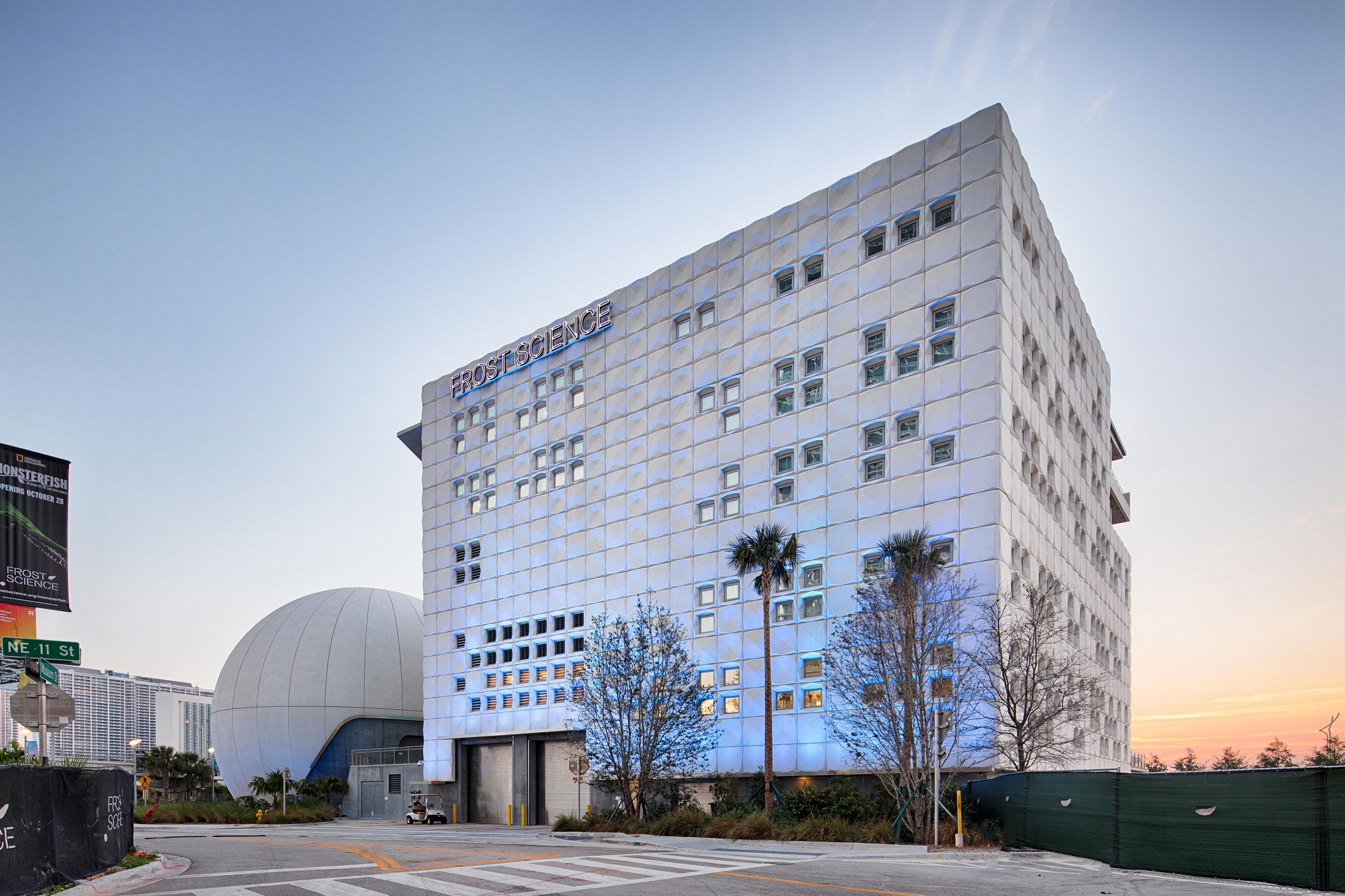
PHILLIP AND PATRICIA FROST MUSEUM OF SCIENCE | GRIMSHAW ARCHITECTS
Description provided by Grimshaw Architects. The exciting 250,000 square foot Phillip and Patricia Frost Museum of Science (Frost Science) in Miami, FL brings together an aquarium, planetarium and science museum onto one campus in downtown Miami’s Museum Park. Taking advantage of the city’s plentiful sunshine, ocean breezes from nearby Biscayne Bay and views to a growing downtown skyline, the inventive architecture of the museum furthers Miami-Dade County’s cultural offerings in a sophisticated, contemporary building.
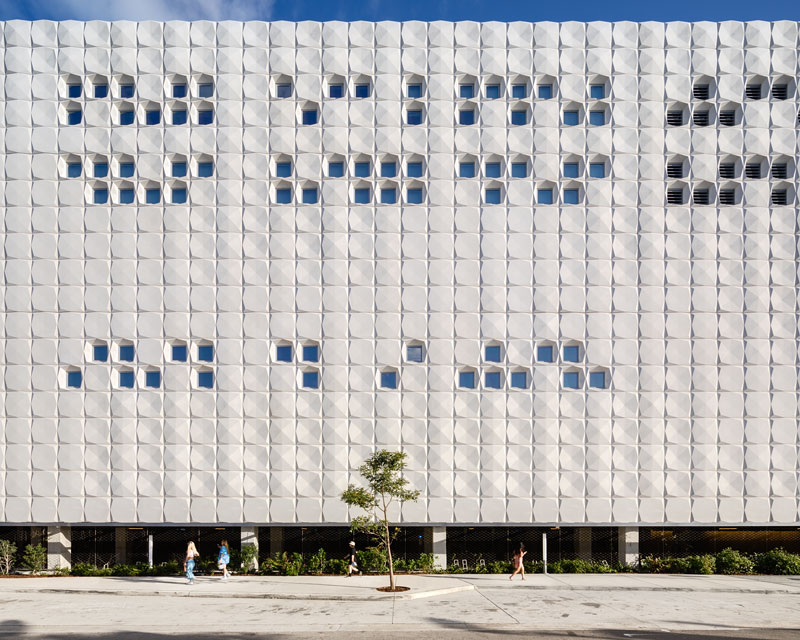
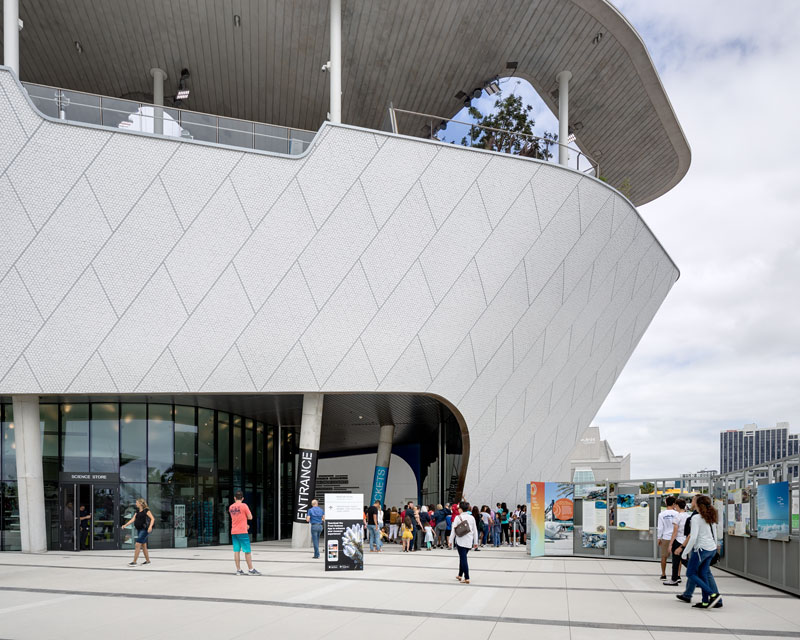
Over one million visitors have visited the new home of the Phillip and Patricia Frost Museum of Science in downtown Miami since opening over a year ago. Far surpassing attendance expectations, Miami residents and visitors, both adults and children alike, have flocked to the multi-faceted museum and its planetarium, aquarium and wide range of exhibitions.
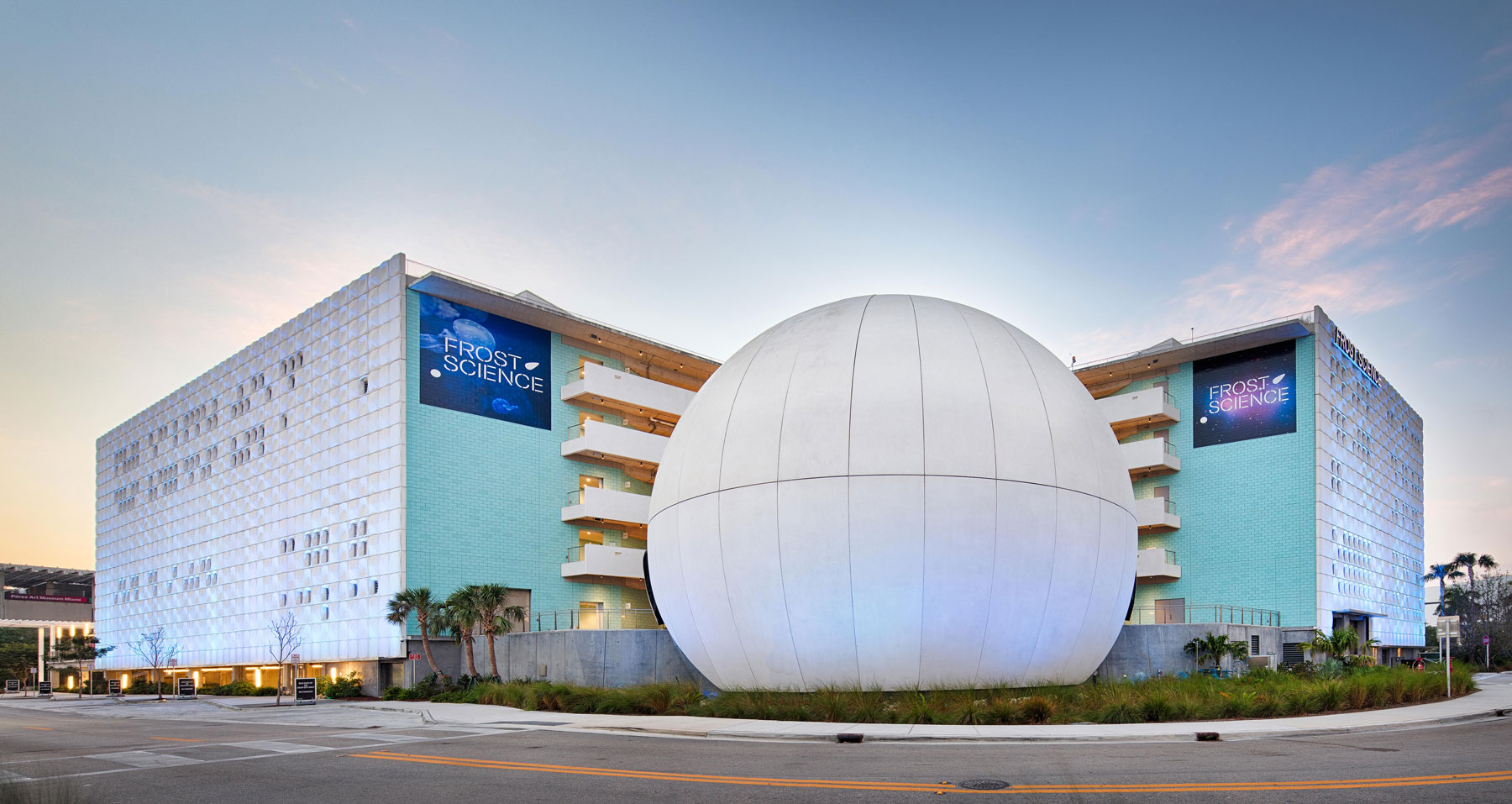
Grimshaw’s response to the project brief resulted in a complex of four buildings situated in an open-armed stance, inviting visitors to walk amongst them and opening up the building to the outdoors. This conscious effort to link the building to the outdoors connects the world at large to the science exhibits within and reinforces the museum’s ties to both the city and nearby marine habitats. An open-air atrium threads between the buildings connecting them to one another and creating a dynamic environment that directly connects the community to the experience of the outdoors and the city around them.
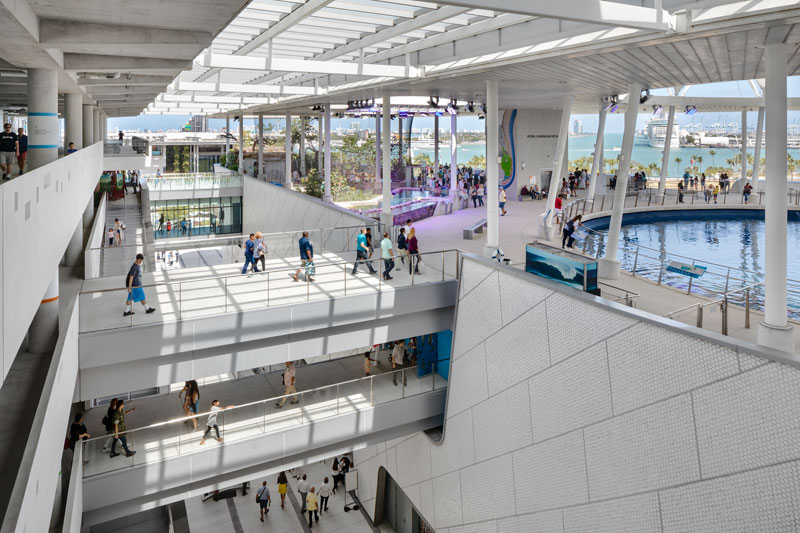
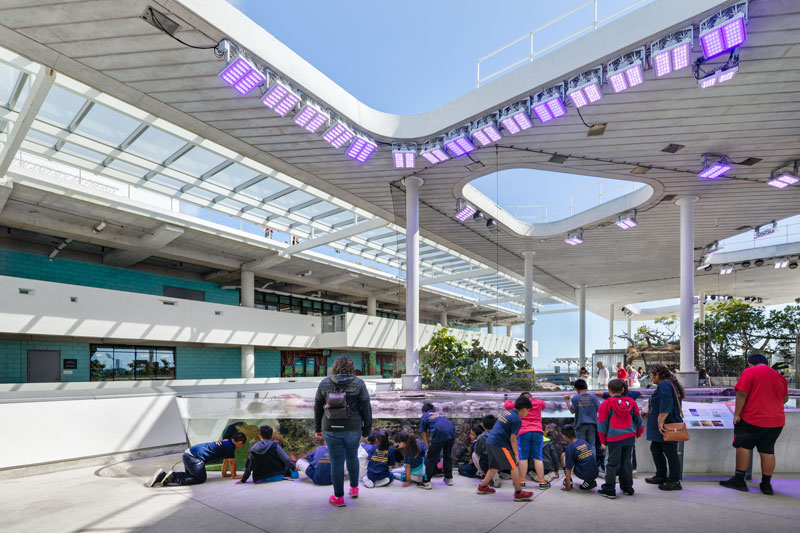
The shapes of each individual building are dynamic and varied, sculpted to take advantage of filtered light and breezes. The ensemble is united by a soft white color palette expressed through a variety of materials that create unique patterns and shadows across the building facades. The bar-shaped buildings of the North and West Wings are clad in a faceted, pixelated geometrical texture that allows the passage of the sun to animate the buildings across daylight hours. The aquarium, more organic in shape, is nestled between the wings, appearing in shape as a water droplet from above and not unlike the prow of a ship when approached from the ground. The iconic planetarium, spherical in shape, completes the site, creating an intriguing landmark that contrasts the more rigid building massing of adjacent developments. Rather than creating a single building, the Frost Science Museum design aspires to feel more like a village where visitors naturally explore the open-air passageways. Balconies are arranged around a central courtyard allowing visitors multiple vantage points to see the multiple paths to areas of exploration.
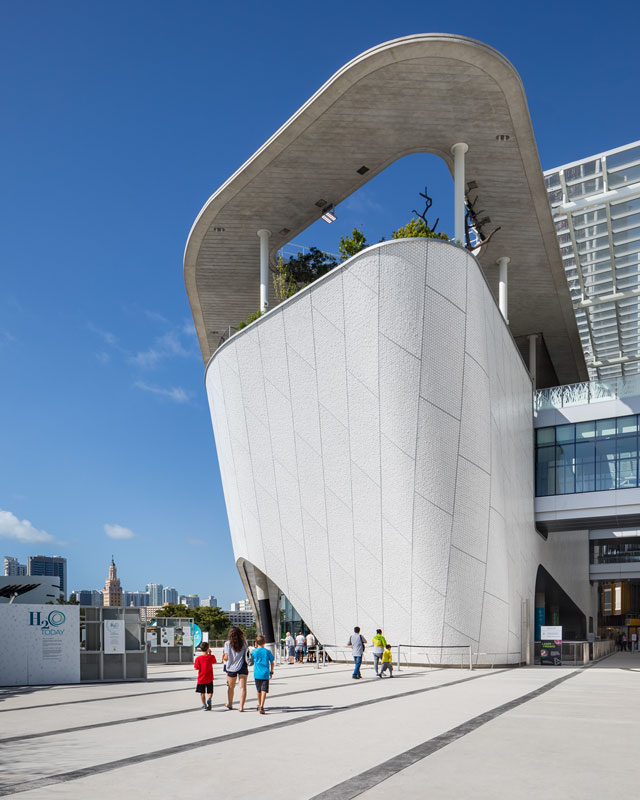

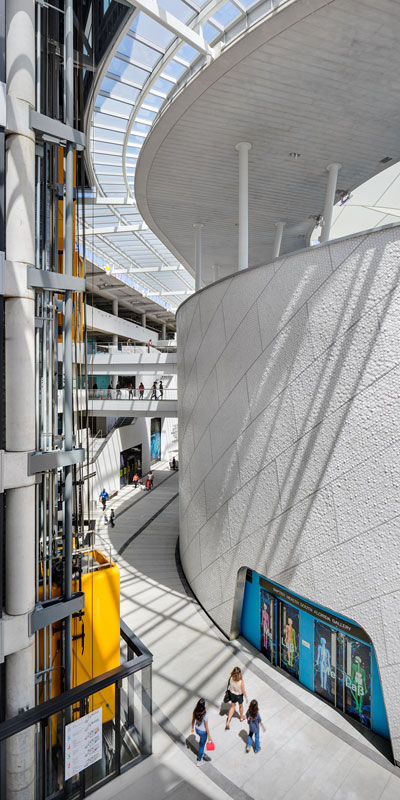
The aquarium building lies at the heart of the site and is where most guests will begin their exploration. Grimshaw has created a unique, vertically-oriented experience that allows guests to encounter aquatic ecosystems at various depths from an open-air rooftop “surface” level to more intimate, immersive galleries “below the waterline.” This portion of the museum is dominated by the 500,000-gallon Gulf Stream Aquarium. The aquarium’s unique cone shape spans three floors to provide a cornerless environment for ocean-cruising wildlife. The bottom of the cone resolves in a massive, 31-foot circular viewing window that allows visitors a dramatic view up and into the aquarium from below, immersed in the blue depths of the Gulf Stream. Other viewing points offer glimpses to the same aquarium including carefully placed portholes and an open-air deck with an aviary and other exhibits highlighting Florida ecosystems.
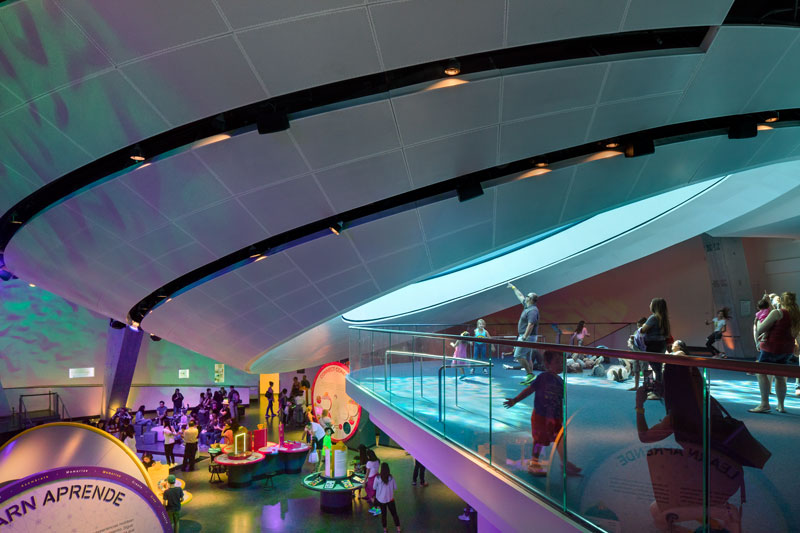
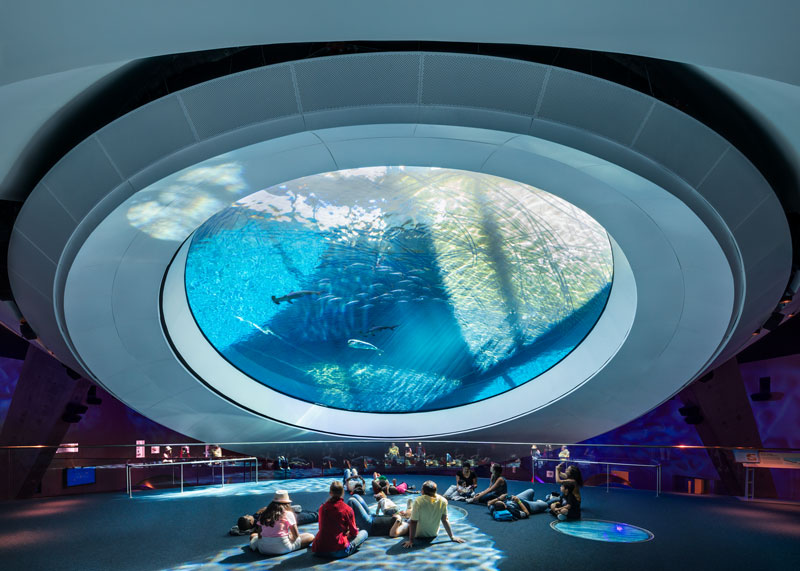
The opening of Frost Science is the culmination of a process that began in 2009 with outreach workshops that polled local residents to find out what kind of science museum they aspired to visit. The Museum is pursuing LEED Gold certification utilizing a variety of environmental strategies including a rooftop solar farm, rainwater cisterns, and a building design that maximizes the abundant sunshine and breezes from the bay reducing the amount of energy needed to condition the space.
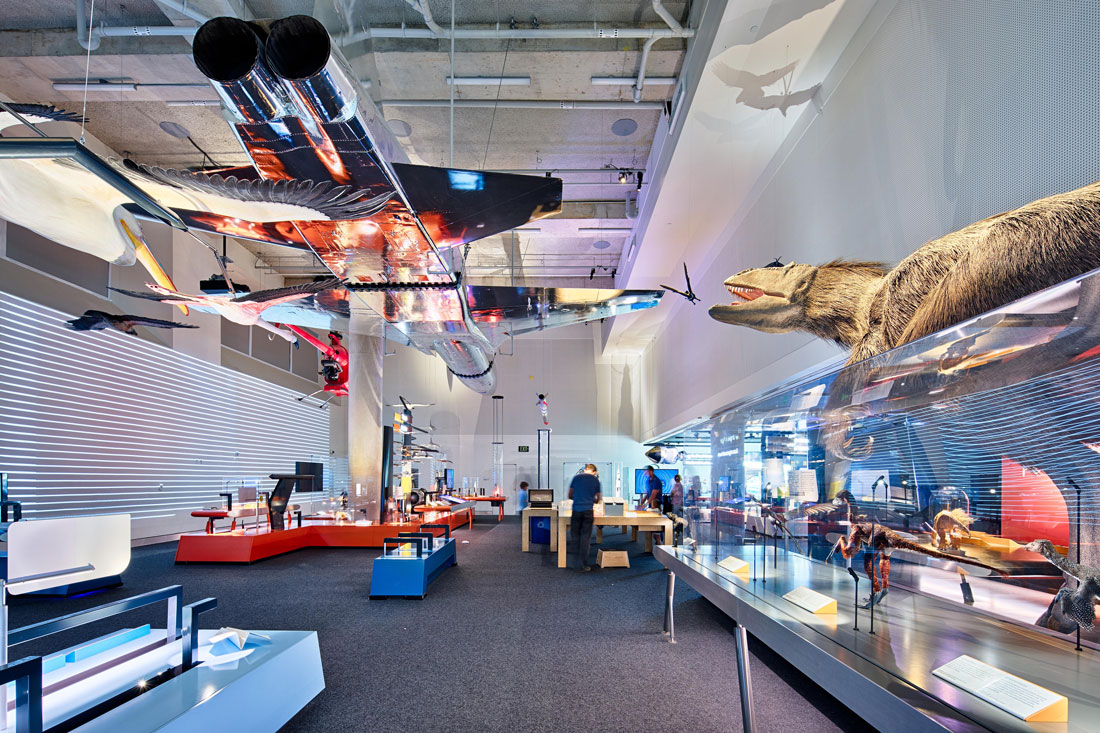
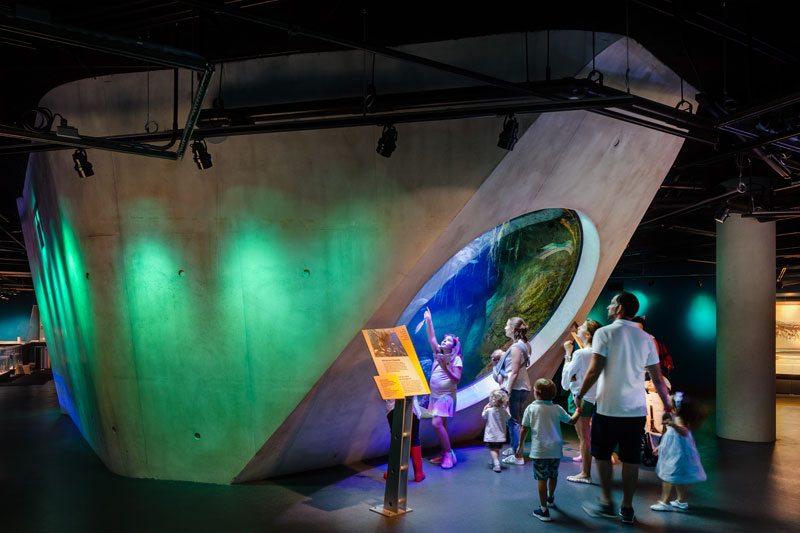
Vincent Chang, Grimshaw Partner says, “To echo the sentiments of many in the community, it has been a privilege to have been part of this journey, bringing science and true contemplation of the world around us into the heart of vibrant, ever-changing downtown Miami.”
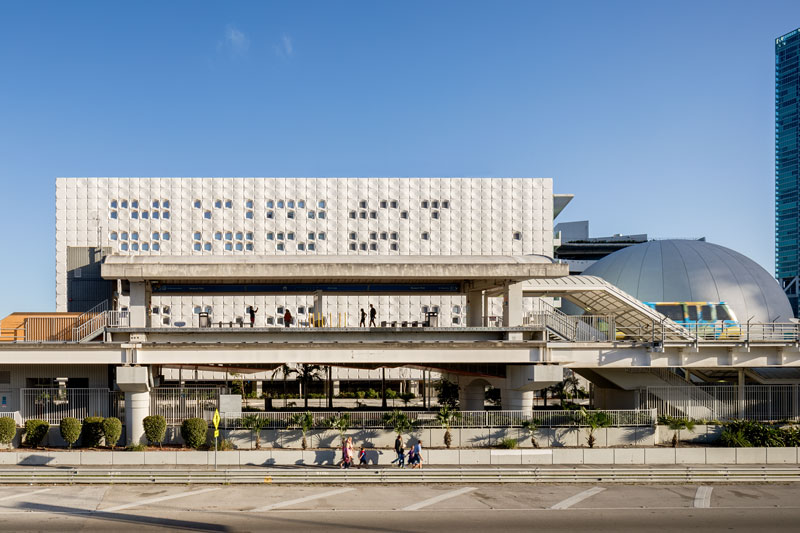
Project name: Phillip and Patricia Frost Museum of Science (Frost Science)
Architect’s Firm: Grimshaw Architects
Website: https://grimshaw.global/projects/phillip-and-patricia-frost-museum-of-science/
Contact e-mail: leah.kenealy@grimshaw.global
Project location: Miami, FL
Completion Year: 2017
Gross Built Area (square meters or square foot): 250,000 sq. ft.
Lead Architects: Grimshaw Architects
Other participants:
Associate Architect – Rodriguez and Quiroga
Engineer – Civil – throughout all phases: ADA Engineering
Engineer – MEP- up to end of DD: Arup
Engineer – MEP- CD to completion: Fraga Engineers
Engineer – Structure: up to end of DD: Arup
Engineer – Structure: CD to completion: DDA Engineers
Landscape Architect: ArquitectonicaGEO
Skanska (after Suffolk) was Construction Manager (CM). There was no GC on the project.
Photo credits: Rafael Gamo and Chad Baumer
Photographer’s website: www.rafaelgamo.com, www.cbaumer.com




